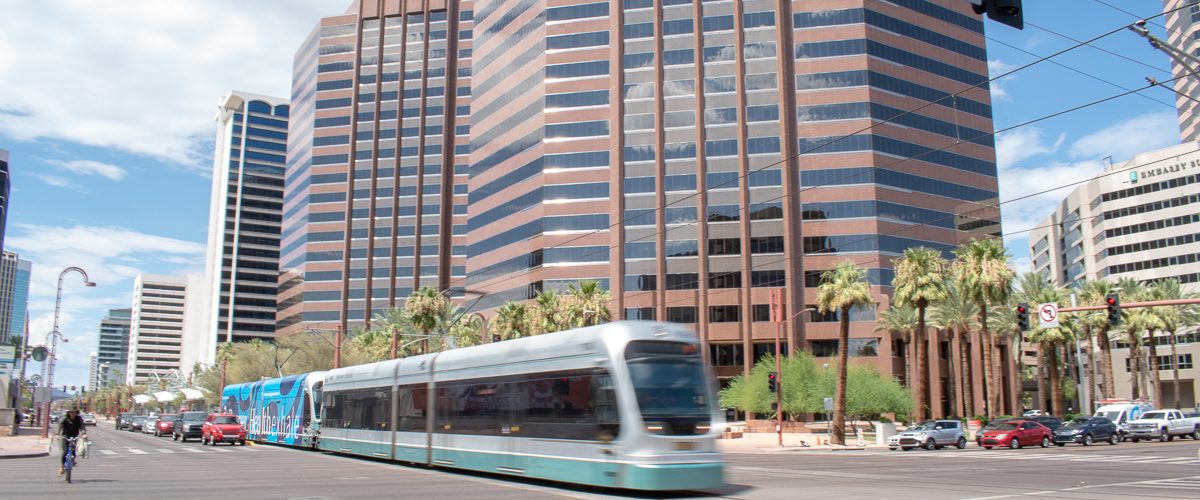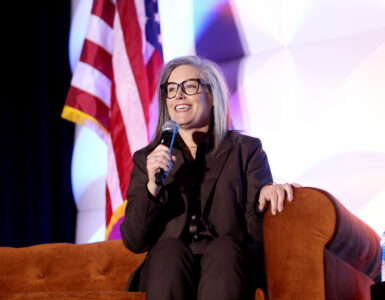Few states can top Arizona for a year of spectacular business news in 2018. It was among the leading states in almost every positive economic indicator possible.
Driven by population growth, the state emerged as a desired destination for new business and industry, technology and trade, and jobs, jobs, jobs. It’s not over yet. Recent projections show the state’s economy will expand at the second-fastest rate in the U.S. through 2022.
While Phoenix was the catalyst for much of the success, Tucson’s strong economy contributed as well. In November, Arizona tied for first place with Idaho for the “most improved business climate” and 17th overall for the best states for business in Forbes’ list of Best States for Business. Arizona also led the nation in both small business growth and wages and second in employment growth, according to Paychex-IHS Markit Small Business Employment Watch.
But as commerce burned hotter than a jalapeño, there were caution signs along the way. For one, the state learned that the first water supply shortages are coming much sooner than expected.
Here’s a roundup of business stories that defined Arizona in 2018:
Rio Reimagined In his last year of life, U.S. Sen. John McCain used his federal connections to enlist the U.S. Army Corps of Engineers to help revive a dream to develop the banks of a 45-mile stretch of the Salt and Gila rivers across metropolitan Phoenix.
In a meeting in March, all the parties came together to make a pact to carry forward the dream, called Rio Reimagined. They are working to bring economic development, ecosystem restoration, and recreation along the stretch of river that cuts through the Salt River Maricopa and Gila River Indian communities, Mesa, Phoenix, Tempe, Goodyear, Avondale and Buckeye.
Gold star economy Arizona saw some of the hottest economic rankings in the nation under the leadership of Gov. Doug Ducey. Census data shows Arizona was the fourth fastest growing state, ending the year with 7.2 million residents. Overall job growth increased three percent. Housing flourished with construction jobs up 10.6 percent. Unemployment rates remained low, ending the year at 4.7 percent.
“The strong Arizona economy is a story we’ll never tire of,” Arizona Chamber of Commerce and Industry spokesperson Garrick Taylor said. “Americans looking for greater economic opportunity are voting with their feet and they’re heading to Arizona.”
Technology infusion The state moved up in a number of rankings as a tech and startup hub. A recent Forrester Research report now ranks Arizona as the 13th best tech talent hot spot in the nation.
One of the technologies taking foothold is autonomous vehicles. A number of autonomous companies located here or expanded: truck fleet manufacturer TuSimple; car development company Waymo; electric, self-driving shuttle, Ollie; and agriculture automated driving features company, AgJunction.
To promote the industry, Gov. Ducey signed an Executive Order creating the Institute for Automated Mobility (IAM), a new consortium of private sector companies, public officials and university research faculty that will collaborate on state-of-the-art research in the field.
Trade wars For Arizona companies that import and export, it was a rocky year with intense global trade wars and global meltdown fears. As the U.S. imposed new tariffs last year, China, Mexico and Canada retaliated in kind. Billions of dollars of goods remain taxed, putting financial pressure on industry sectors like aluminum and steel.
On the horizon: China and the U.S. have committed to a moratorium on new tariffs until March. Meanwhile, tariffs imposed last year remain in effect. A new NAFTA agreement was pieced together, called the United States Mexico Canada Agreement (USMCA), but tariffs set in place last year remain as the top legislative bodies in the three countries consider final approval of the pact.
Water emergency A 19-year-drought in the Southwest laid out a new reality: the region will likely see its first water shortage in 2020, a decade earlier than expected. With the announcement, Arizona is under federal orders to wrap up its part of a seven-state pact, called a drought contingency plan, which lays out who will receive cuts to water supplies when shortages occur.
A statewide committee of water interests has negotiated for six months to find a way to help Pinal County farmers and get commitments from all users on how to help shore up levels at Lake Mead so they do not dip further. Water interests including farmers appear ready to seal the deal. If it can make it to the finish line, the state Legislature has until Jan. 31 to approve the plan or face a federal takeover.
Tourism industry breaks records Arizona set records for visits from out-of-towners, many attracted by the sports mecca here of spring training, professional teams, college bowls, including the Fiesta Bowl, Waste Management Phoenix Open, NASCAR and more.
Arizona also saw added flights to local and regional airports on both foreign and domestic routes. Swoop and Rouge announced ultra-low and low-cost flights to and from Canada. Condor Airlines now offers non-stop flights from Phoenix to Germany. American announced it is bringing a non-stop flight to and from Phoenix to London.
Costly mandate defeated A renewable energy mandate that would have changed the state constitution to force utilities to produce half of their electricity from renewable sources by 2030 failed spectacularly in November. More than $54 million was spent, making it the most expensive ballot campaign in state history.
In the end, the winners were ratepayers, businesses, governments agencies, schools, social service agencies, and other groups that would have faced higher electric bills and the closure of the largest single taxpayer in the state, Palo Verde Generating Station.
Hang on for 2019!
















Add comment